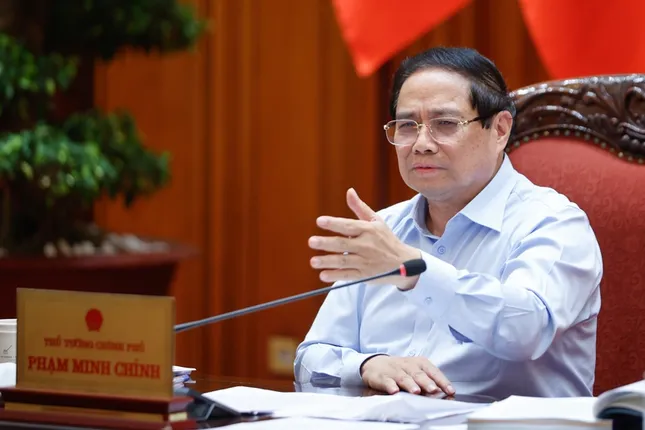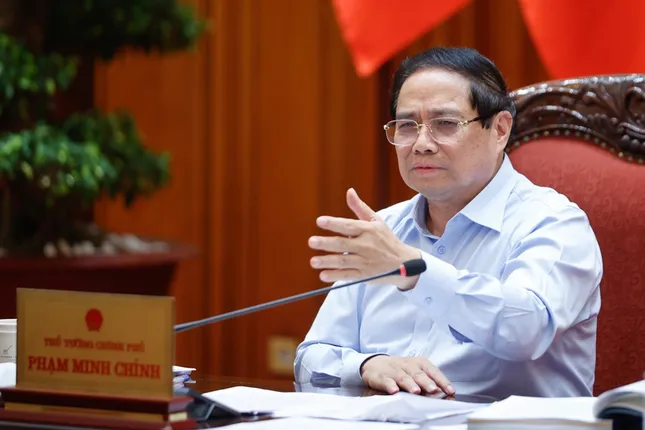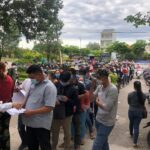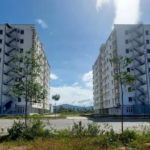Prime Minister Pham Minh Chinh has just signed Dispatch No. 80/CD-TTg on June 1st, 2025, requesting that ministries, sectors, and localities accelerate the implementation of the plan for handling assets after rearranging the organization of administrative units at all levels.
According to the Dispatch, in implementing the policy of rearranging the organization of administrative units at all levels and building a model of local government with two levels, the Politburo, the Secretariat, the Government, and the Prime Minister have directed a comprehensive review and rearrangement of headquarters and provided equipment to prevent waste and ensure practicality.
The Ministry of Finance reported initial results in implementing the arrangement, placement, and handling of assets under the management of ministries and sectors when rearranging the organizational apparatus and administrative units. However, in some places, the implementation has been slow, mainly due to a lack of determination from authorities and leaders.

Prime Minister Pham Minh Chinh. Photo: VGP
To ensure effective, transparent, and sustainable handling of assets after the rearrangement of the organizational apparatus and administrative units, the Prime Minister requested that ministers, heads of ministerial agencies, government agencies, and chairmen of provincial and municipal People’s Committees across the country promote and continue to direct the full, serious, and urgent implementation of the directions of the Politburo, the Secretariat, the Government, and the Prime Minister, legal documents, and the Ministry of Finance’s guidance.
According to the Dispatch, ministers, heads of ministerial-level agencies, government agencies, and chairmen of provincial and municipal People’s Committees across the country arrange headquarters, facilities, equipment, and conditions to serve the work of agencies, organizations, and units under the new administrative unit model.
Based on the current headquarters, infrastructure conditions, means of transportation, and information technology infrastructure, the arrangement of multiple headquarters in the initial phase of administrative unit rearrangement can be considered to ensure state management at merged localities and reduce travel and living difficulties for officials, public employees, and workers. This will also prevent interruptions in providing public services to the people.
The Prime Minister also directed that the plan for arranging, rearranging, and handling public assets must be implemented simultaneously with the construction of the scheme for rearranging administrative units at all levels, giving priority to arranging, allocating, and handling health, education, and community culture.
The Prime Minister requested that the Ministries of Health, Education and Training, Culture, Sports and Tourism guide localities on standards and requirements for the area of houses and land for constructing health facilities, education and training institutions, and cultural, sports, and tourism institutions at the grassroots level under the new organizational model. This will serve as a basis for localities to build plans for arranging, allocating, and handling houses and land, completing this task before June 15, 2025.
Construct a plan for handling surplus assets according to the Ministry of Finance’s guidance, ensuring the 6 Clears: Clear people, clear jobs, clear time, clear responsibilities, clear products, and clear authority. Then, implement the handling according to the published plan, avoiding waste of assets.
The Dispatch emphasizes the view that the arrangement and handling of assets are among the bases for evaluating officials in the process of streamlining the political system’s apparatus.
Ministries with a system of specialized agencies in localities urgently complete the arrangement of the organizational apparatus according to the new administrative unit model and, on that basis, build a plan for arranging, allocating, and handling headquarters and facilities to ensure the needs of coordination with localities to handle surplus houses and land. This should be done through coordination between levels and between the central and local levels to effectively utilize available headquarters and facilities, completing this task within three months from the approval of the scheme for rearranging the organizational apparatus and administrative units.
The Prime Minister requested that central ministries and sectors and localities strengthen inspection and supervision of asset arrangement before, during, and after the rearrangement of the organizational apparatus and administrative units. He also requested that the Standing Committee directly supervise and lead the arrangement of headquarters in each field and locality and establish working groups to urge and guide directly at agencies, organizations, units, and localities with a large volume of headquarters, complex nature, and slow progress. Strict handling must be applied to collectives and individuals who fail to perform or fully perform their assigned tasks, especially the responsibility of the leaders, affecting the progress and effectiveness of the arrangement and allocation of headquarters under their management.
“Local Authorities to Determine Eligibility Criteria for Social Housing Purchase and Rent-to-Buy Schemes.”
The legislature has recently passed a resolution to pilot several special policies to promote the development of social housing. This move empowers local governments to establish practical criteria for approving individuals to purchase or rent-to-own social housing.
“Rethinking Provincial Mergers and County-Level Governance: Optimizing Educational and Healthcare Institutions”
The restructuring of local public service units is guided by a set of principles aimed at enhancing efficiency and effectiveness. These principles are designed to streamline operations, improve service delivery, and ensure optimal utilization of resources. The underlying objective is to create a more agile and responsive public service system that can cater to the diverse needs of its constituents.
The Big Three: How Vietnam’s Powerhouse Cities Continue to Thrive with Special Autonomy
The localities that are subject to the merger will continue to benefit from the special mechanisms previously enacted by the National Assembly.





















